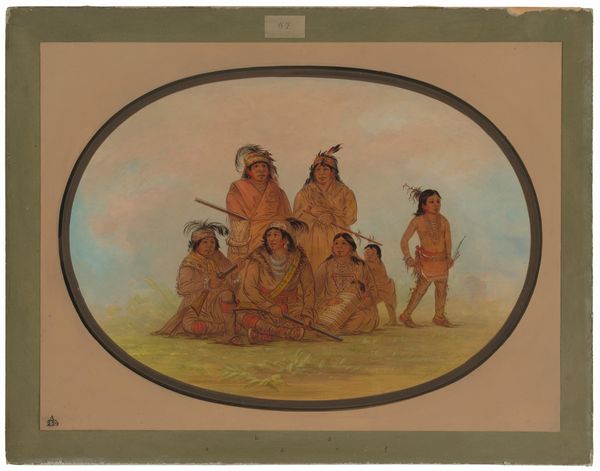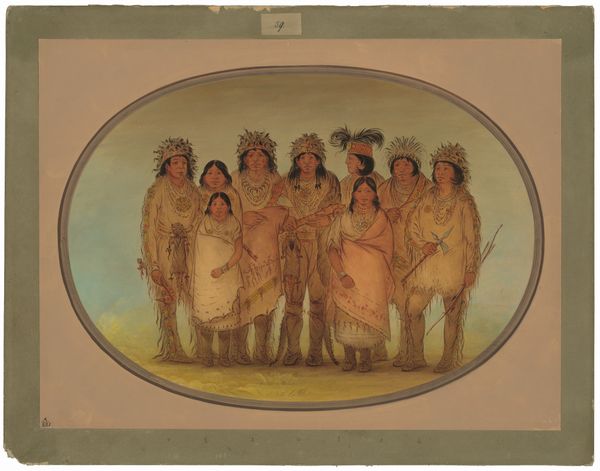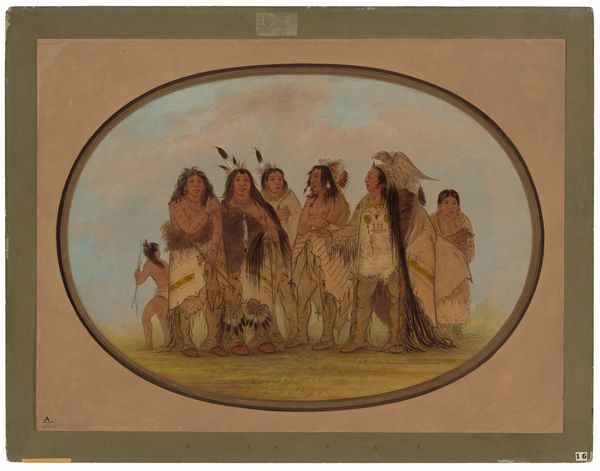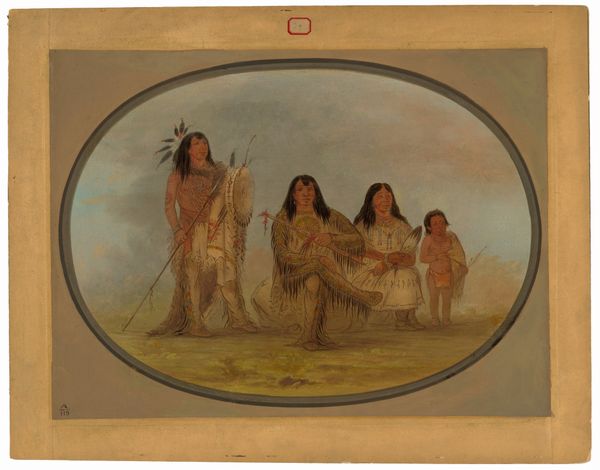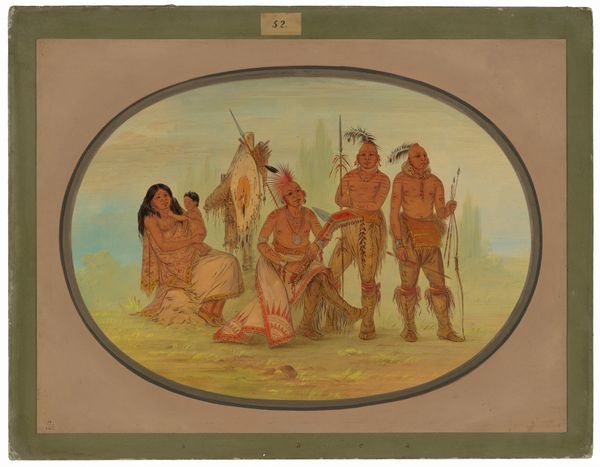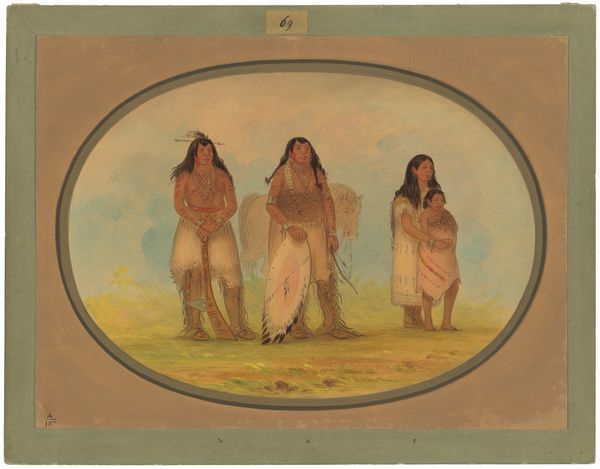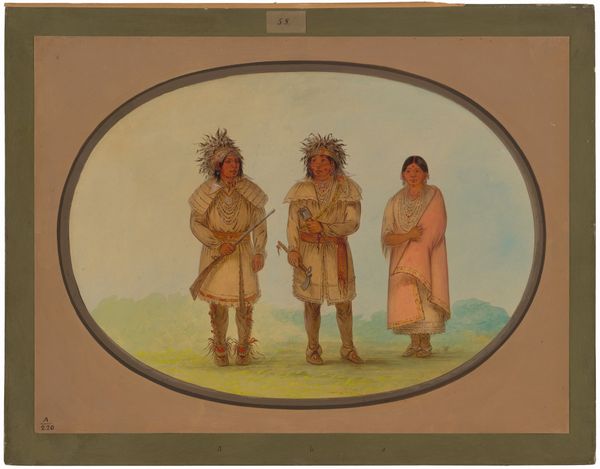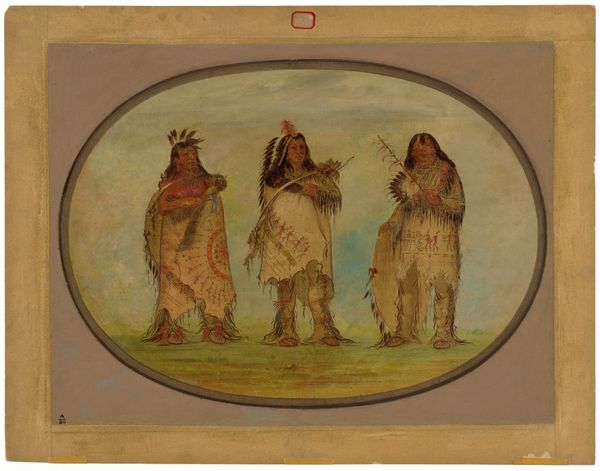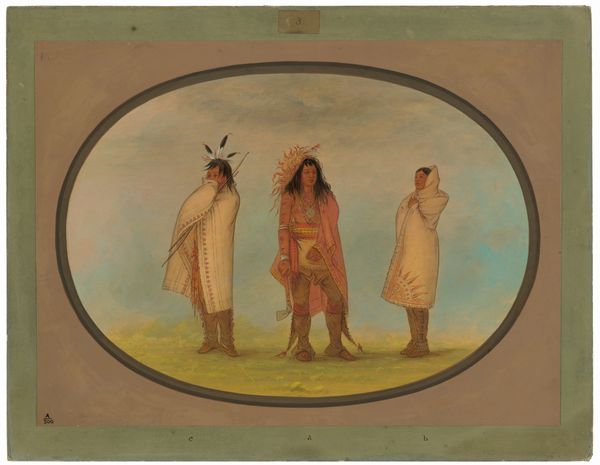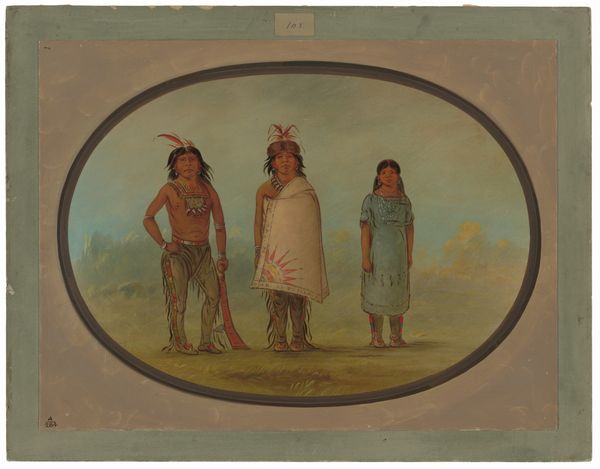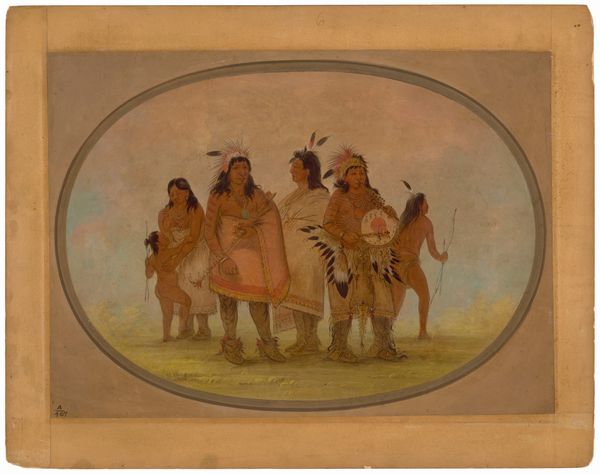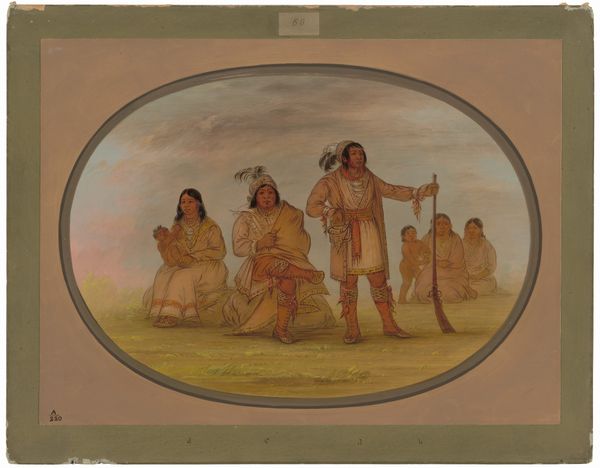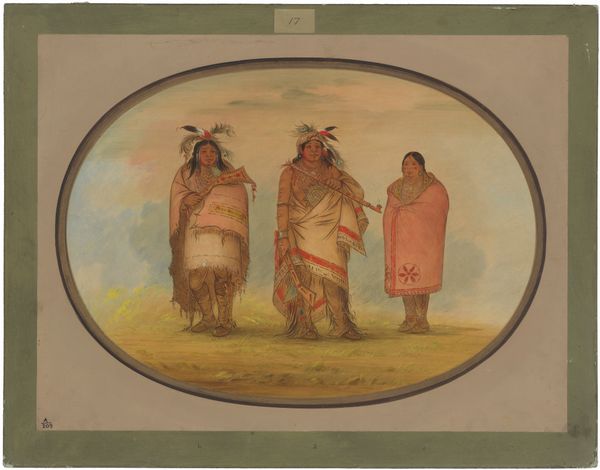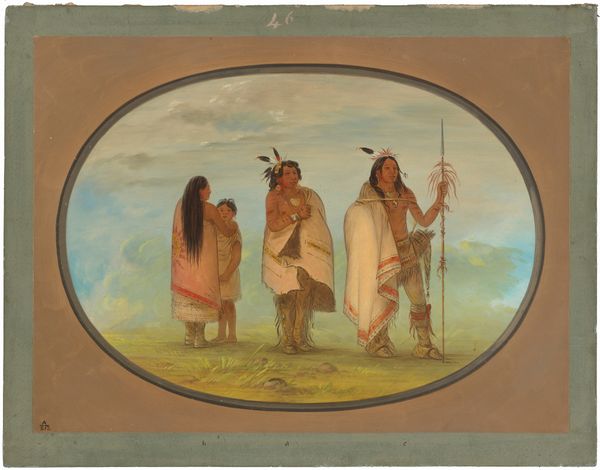
painting, gouache
#
portrait
#
water colours
#
painting
#
gouache
#
watercolor
Dimensions: overall: 47.1 x 63 cm (18 9/16 x 24 13/16 in.)
Copyright: National Gallery of Art: CC0 1.0
Curator: What a fascinating scene, this watercolor by George Catlin. Titled "Iowa Indians Who Visited London and Paris", it was painted sometime between 1861 and 1869. Editor: It feels so… contained. The oval framing almost gives it the air of a commemorative portrait, like those produced for royal families. There’s something both staged and unsettling about it. Curator: Unsettling in what way? Catlin made quite a career depicting Native American life. His intentions, of course, are a complicated topic when viewed through a contemporary lens. Here, he depicts the Iowa tribe representatives during their European tour. One has to wonder about the economics that facilitated, or necessitated, such a journey. Editor: Perhaps it’s the light. That soft, almost ethereal quality makes them seem distant, even ghostly. And the repetition of the figures—the matching headdresses, the similar poses… it's unnerving. What does the repetition do to their individual presence within the painting, do you think? Curator: Catlin often depicted individuals with great detail. I see the consistency you are talking about; it makes one consider whether the very act of touring for Western audiences commodified them. What choices were available for their presentation of self? Think too, about how the water color itself could have been another part of how Catlin consumed the original event. What did this form enable that oils could not? Editor: True, true. The very materiality of the work whispers of fragility, of a culture being delicately preserved, or perhaps, subtly consumed. And, yes, watercolor lends itself to that dreamy, transient quality, doesn’t it? Looking closer at that central figure, notice how the brushstrokes create this sense of luminous skin against the intricate beadwork of her garments. There is much symbolism in that contrast alone. Curator: The blend of artistic intention, indigenous agency, and the art market of the time creates a truly complex work to consider! The material reality of the pigments and paper, combined with the economic forces that brought these people to Europe, forces me to question assumptions about representation and agency. Editor: Yes, the visual elegance belies the deeper, more problematic context of cultural exchange and power dynamics, something that really becomes visible in the form, lighting and figures Catlin employs here. This glimpse of history reminds us to confront beauty and question intention with a wider awareness.
Comments
No comments
Be the first to comment and join the conversation on the ultimate creative platform.
